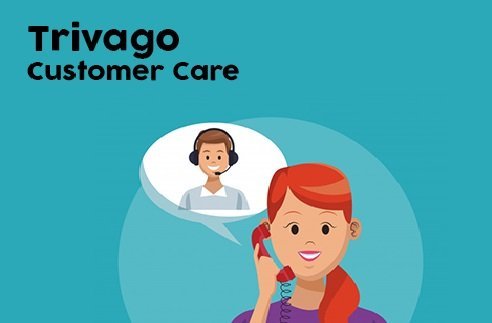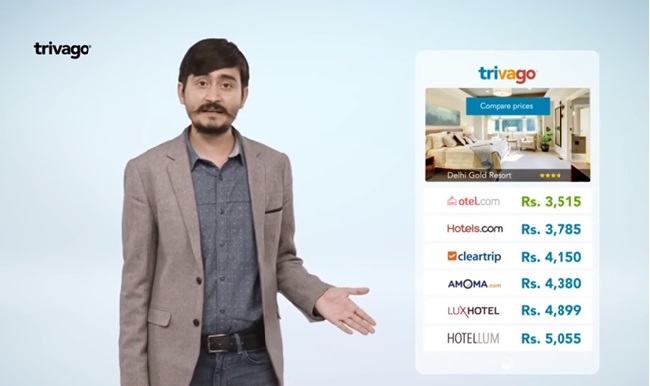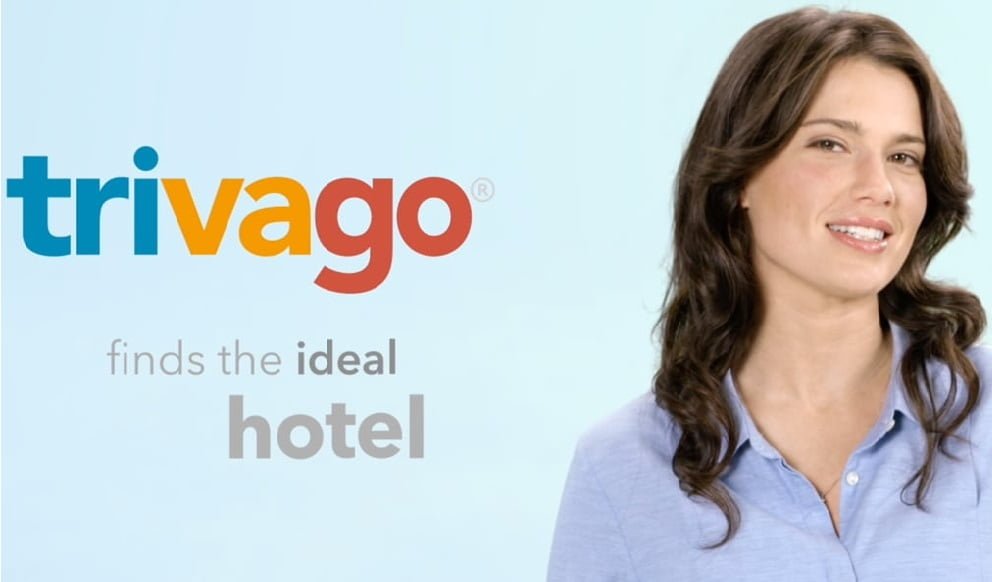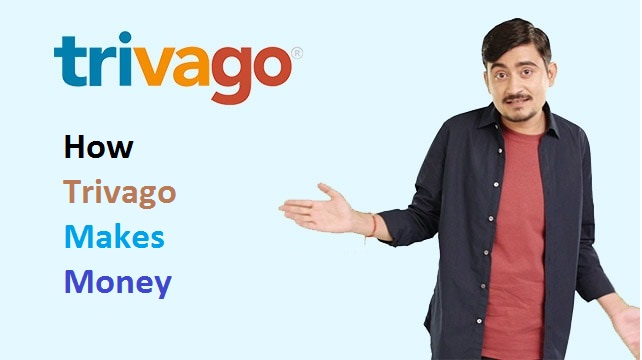Founded in 2005, Trivago offers online services like hotel accommodation and Ticketing for the train, air, and buses. Trivago is a Leading Travel Booking System. The business model of Trivago revolves around the travel, information technology, hotel, and marketing industries.

In this post, we will interpret the business model of Trivago and understand how it has become one of the most popular hotel search engines in the world. We ‘re also going through various sources of income from the business that help Trivago make good money. Let us begin the journey with the Business model of Trivago from its introduction.
Introduction to the Business Model of Trivago
Founded by Rolf Schrömgens, Stephan Stubner, Peter Vinnemeier, Malte Siewert, Trivago is the first German hotel search engine company. It specializes in hotels and accommodation-related products and services on the Internet.
It’s a price comparison platform where hotels and brands advertise and list their offerings. Trivago charges these based on the Cost-Per-Click (CPC) model.
It also offers free and paid versions to brands to promote their offerings on the Trivago platform.
Trivago offers products and features such as hotel search, Trivago app, Trivago hotel manager, pro hotel manager, and connect rates. Trivago also has a number of indexes and rankings, such as the Trivago Rating Index (tRI), Travel Advice Calendars, and the Trivago Hotel Price Index .
Trivago brands itself as ‘trivago’ in the lowercase format.
The various products and features of the Business Model of Trivago are:
1) SEARCH HOTEL
Trivago’s Hotel Search Page is distributed over more than 50 countries around the world. As the biggest online hotel search platform, it lists more than 1 million hotels and 250 booking sites around the world.
2) TRIVAGO APP
The Trivago hotel search product is also available in the form of applications for Android and iOS devices.
3) TRIVAGO HOTEL MANAGER
It is the Trivago B2B platform that enables hoteliers to market their features and facilities on the Trivago platform.
4) HOTEL MANAGER PRO
It is a fee-based version of Trivago’s Hotel Manager platform that allows hoteliers to configure and monitor their own listings, plus access to competitor rate analytics.
5) RATE CONNECT
By using this feature of Trivago, hotels can update their availability and current rates using the Trivago Hotel Manager Tool.
Now, having been aware of the introduction to the Trivago business model, let us take a brief look at the history of Trivago.
History of Business Model of Trivago
Rolf Schrömgens co-founded a shopping website known as Ciao, but after some time he realized that it was costly and inefficient to keep the content of a brand online.
So, he worked with three other college friends to create a platform that would allow brands to manage their content themselves in a more cost-effective manner. This is how Trivago has come into being.
Today, Trivago has more than 1,600 employees and is one of the fastest-growing company.
Trivago ‘s key subsidiaries are Base7booking, Rheinfabrik, and TripHappy.
Working in Trivago’s business model is very simple, well structured, hassle-free, and tailored according to the inclinations of its customer market. On the next segment, let ‘s look at how Trivago ‘s research proceeds-
Business Model of Trivago – How Does Trivago Works?
To grasp Trivago’s business model, we’ll look at Trivago’s business model canvas. There are different elements whose expert conglomeration allows Trivago to work in a profit-driven manner.
Let’s look at the elements here and now.

Core elements on which Trivago Business Model relies.
THE BUSINESS MODEL OF TRIVAGO COVERS FOR KEY PROPOSITIONS:
1) Quality
Trivago shows flexibility by being open to clients and enabling them to contribute to the content of their website. We can incorporate content related to missing brands, unfinished profiles, brand representations, etc. We may also claim consistency by changing patterns.
2) Accommodation
Trivago helps consumers to make a decision on the costs of the company. Things can also be filtered using the criteria available on the website.
3) Customization
Trivago provides flexibility by allowing brands to customize their profiles. This helps brands to attract relevant customers and customers to quickly find what they want.
4) Brand / Status:
Trivago has created a strong brand for itself because of all that it has to deliver. It offers information from more than 250 destinations, 55 countries, 33 dialects and 100 hotel networks. Multi-million hotel surveys and photographs have been given to its clients.
Now, the next thing that plays a major role in the Trivago Business model is the Trivago consumer group, so let’s look at that as well.
Trivago Business Model Customer Segment?
Trivago ‘s business model has two consumer divisions. The first segment includes brands and hotels that offer advances to customers, while the second segment includes customers who deviate from costs and offerings and ask what they need. Customer segment can also be divided into two other forms:
1) Partners:
It includes hotels, newspapers, and online travel agencies.
2) Visitors are welcome
It includes travelers who prefer online booking, business travelers, and others who choose to get the best online booking deals by comparisons.
Channels Used in the Business Model of Trivago
- Trivago markets itself through its own website. It advances what it has to offer through its social media pages. It also uses TV and web-based marketing to show itself.
- The mobile app is also very relevant for channeling the Trivago business model.

Customer Relationships Using Trivago Business Model
Trivago maintains its relationship with its customers through its website. This constantly responds to the requests made on-site by the customers. Although it offers limited interaction with the representatives, it adds the required individual element whenever necessary.
For expert channeling of Customer Interaction, Trivago opts for the following customer relationship options:
- Internet media
- Customer Support

Reviews, Feedback, and Ratings
1) Main activities
Trivago serves as a platform for brands/hotels to showcase their services and for clients to find what they want. It uses its website and its application as a point. Furthermore, its behaviors can be classified as:
- Production and management of goods
- Control networks of visitors
- Distribution and marketing programs
- Handle hotel networking
2) Main Collaborators
Trivago’s business model involves two main partners-
1) PARTNERS SUBSIDIARY:
Trivago partners with third parties who present their deals on Trivago ‘s website.
2) PARTNERS:
Trivago allows customers to act as analyzers in order to assess the quality of their services. These clients audit services such as luxuries, administrations, etc. by providing a survey. Customers will receive rewards for completing such surveys.
It serves as a catalyst for consumers and helps Trivago to get more reviews to improve the customer’s experience.
More broadly, the partners of Trivago Business Model can be understood as:
- Hotels;
- Guests are welcome
- Companies in the media and advertising.
- Online travel services.
- Investors and shareholders of concern.
- Processors of payment.
Key Resources For Channelization of Trivago
Trivago ‘s website and application are the company’s core assets. These assets act as phases that serve millions of clients. Client support staff is another important resource that helps manage and operate the website and the application.
In a simpler way, you can consider the tools of Trivago as:
- Trained workers.
- The Development Network.
- Database of information.
- Trivago Business Model Cost Structure.
The most expensive driver for Trivago is the advertising cost. Other costs include, but are not limited to, exchange costs, client bolstering and operating costs. Trivago uses automation to reduce costs.
Factors of Trivago Cost Structure
- Wages for workers.
- Technological set-up and running costs.
- Marketing and marketing plans and their execution.
Now, after you know all this about Trivago’s business model, the next thing you need to know is how Trivago makes money. Let us understand this, too:
Revenue Model – How Does Trivago Make Money?
Trivago business model produces revenue using three separate revenue streams:
Listing fee: It is the charge charged by hotels and brands to have their services listed on the Trivago Network.
Subscription fee: Trivago enables hotels and brands to change their profiles and incorporate specific details about their offerings. This helps them to better target their customers. Trivago pays the monthly fee for these programs.
Referral sales: this is the largest revenue source in the Trivago business model. This revenue comes from private hotels, hotel chains and online travel agencies ( OTAs). The customer is directed to the advertiser’s website when the user clicks on the offers provided in the search results. For every referral, Trivago charges money. The software is known as the Cost-Per-Click (CPC) software.
So, Cost per Click or Cost per Purchase is also an important means of making money through Trivago. In addition, the use of the Trivago Network for ads and media by hotels and companies also allows Trivago to make good money.
It was all about the revenue-generating means of the Trivago business model. Finally, in the last part, we will reveal the secret layers of Trivago ‘s marketing strategy that will help the company extend its scope and grow its customer base-
Business Model of Trivago Approach for Brand Awareness
Trivago’s business model focuses on brand awareness, public relations, display ads, and Search Engine Marketing ( SEM). It also uses interactive Facebook ads for advertising purposes. Two of the main marketing approaches used by Trivago are-
1) The Man Trivago
This is Trivago’s most successful marketing strategy. The Trivago Guy has become an internet sensation due to its odd appearance.

Trivago hires actual, approachable, and sincere actors to act as the Guy of Trivago. Due to its initial success, Trivago also invited people to give the Trivago Guy a makeover. This has given rise to fan fiction, parodies, and a massive gay follow-up.
2) The Trivago Girl
After the success of Trivago Guy, Trivago also began to use Trivago Girl to advertise its services.

Conclusions
With more than 120 million visitors per month, 190 million hotel ratings, 250 booking sites, 14 million photos, rate comparisons in more than 1 million hotels and websites in more than 50 countries, Trivago is one of the largest search engines for hotels.
It is fast-moving forward to becoming the most important and ideal source of knowledge for finding hotels at the lowest rates.
Trivago ‘s business model is highly effective at reaching market bases in order to maximize its scope and provide the most loyal customer base. What are your views on the business style of Trivago?
Do you find Trivago’s business model inspiring? In the comments, share your thoughts with us.
If you like this article and want to read more About Marketing Mix – Click Here
If you Like this Article Please Hit the Like Button and Follow Us on our Facebook Page: PROJECTS4MBA
If you like this article and want to read more About Marketing Mix – Click Here
If you Like this Article Please Hit the Like Button and Follow Us on our Facebook Page: PROJECTS4MBA


